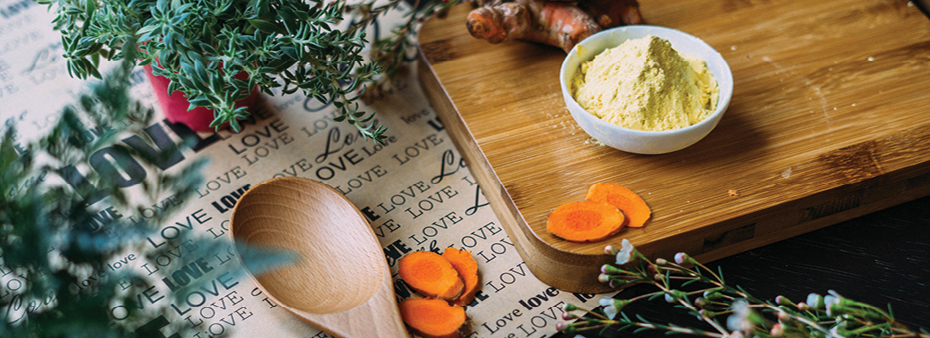Osteoarthritis (OA) impacts over 30 million Americans, with joint pain and musculoskeletal pain in general being one of the top reasons people see their physicians.1 Accompanying signs of arthritis are altered joint alignment, lack of joint mobility, morning stiffness, joint swelling, joint line tenderness, bony enlargements and pain with exercise in some cases.1,2
First-line therapies for OA include patient education, over-the-counter (OTC) analgesics (acetaminophen), OTC anti-inflammatories (NSAIDs), a walking or light exercise program, weight management or nutrition program, and a referral to a physical therapist or chiropractor to help with symptom management.1
Redefining Osteoarthritis
When most clinicians think of OA, what comes to mind is a disease of wear and tear. We remember what we were taught during our training, which is to focus on the loss of joint space and a degradation of cartilage. However, we now know that OA is much more involved than what we learned in medical school even 10 years ago.
OA really should be referred to as whole joint failure, just as loss of full function of the heart is diagnosed as heart failure and loss of full function of the kidney is diagnosed as renal failure. Whole joint failure involves not only the cartilage but also helps us take into consideration the underlying bone, synovial membrane, synovial fluid, tendons, muscles, nerves, nociceptor sensitivity and underlying metabolic factors (TIMP/MMP activity).2
Traditional Osteoarthritis Therapies
Traditional therapies target primarily 5-LOX, COX-1, COX-2 and PLA2 inflammatory pathways via oral medication or intraarticular injection to provide pain relief. However, this relief comes at a cost of more cartilage loss than previously thought and higher risks. Safer treatment alternatives should be a primary consideration, given the constraints of NSAIDs, especially in those with high cardiovascular risk, gastrointestinal and renal comorbidities, and the constraints of acetaminophen in those with high risk of liver injury or multiple medication adverse reactions.
In fact, a recent study at Boston University School of Medicine found accelerated arthritis and joint destruction can be the unintended result of intraarticular corticosteroid injections.3 Safe and effective alternatives must be able to be taken long-term with no side effects, given the chronicity of OA. Further, considering the need for pain, metabolic and whole-joint structural benefits, turmeric—an ancient, golden spice—is the gold standard for first-line and long-term OA therapy.
Benefits of Turmeric for Osteoarthritis
The phytochemical analysis of turmeric has revealed that there are 200-plus bioactive molecules present in the natural matrix of turmeric that contribute to its health benefits. The main constituents are the curcuminoids, which include curcumin, demethoxy curcumin and bis-demethoxy curcumin. In addition to this, the non-curcuminoid components, including turmerin, turmerones, elemene, furanodiene, curdione, bisacurone, cyclocurcumin, calebin A, and germacrone,4-7 all have shown the ability to reduce pain and inflammation separate from curcumin.8,9,12-16 The broad-spectrum bioactives mechanistically go above and beyond the primary targets of traditional therapies.
Recently, scientists have discovered that the microbiome metabolizes these bioactives, and they enhance the anti-inflammatory signaling capacity of turmeric’s bioactives. Studies show turmeric’s bioactives increase microbiome diversity, inhibit and protect the body from LPS-induced inflammation,10 fortify enterocyte tight junctions, and increase afferent vagus nerve signaling.11 These mechanisms provide a range of benefits that truly match the mechanistic needs of arthritic joints beyond a wear-and-tear or local inflammatory approach.
In vitro and in vivo studies indicate the entire spectrum of bioactives in turmeric exhibit antioxidant, antineoplastic, antiviral, antiarthritic, anti-amyloid and anti-inflammatory properties. But just how does the golden therapy stack up in clinical trials? Multiple double-blind, placebo-controlled clinical trials of osteoarthritis and rheumatoid arthritis (RA) patients have shown a decrease in pain, increase in joint function, and improved inflammatory and autoimmune biomarkers, and turmeric has also outperformed NSAIDs in head-to-head trials.8,12-16
A Turmeric Matrix and Osteoarthritis Case Study
In 2017, a double-blind, placebo-controlled, three-arm study using a turmeric matrix extract was performed with 36 active RA patients, conducted at the Indian Institute of Technology and published in the Journal of Medicinal Food. Patients were evaluated by doctors who adhered to the American College of Rheumatology criteria, which included physical exams as well as pain and function questionnaires.
The patients also had baseline metabolic panels and inflammatory biomarkers measured (CRP, ESP and Rf) before and after the 90-day treatments. The active RA patients were randomly assigned to receive a 250 mg x 2 per day dose, a 500 mg x 2 per day dose, or a placebo (corn starch) dose.
Study Results
The results showed the safety and efficacy of both the low and high doses of the turmeric complex extract. The disease activity score-28 (DAS28) saw a change of 52% for the low dose, a 65% change for the high dose, and no change for the placebo group. The visual analog scale (VAS) saw a 62% change for the low dose, a 72% change for the high dose, and a 3% change in the placebo group.
Overall, both the DAS28 and VAS showed statistically significant improvements in scores, with the higher dose resulting in greater score improvements. The ESR, CRP and Rf values of both low- and high-dose patient groups showed statistically significant improvements and a dose-response showing greater improvement with the higher dose.
The ACR20 analyzed patients for the number of swollen joints, pain and physical function. Once again, both groups showed improvements not only in the number of total swollen joints but also a reduction in the severity of swelling and improvement in function in both low- and high-dose groups. Finally, results in pain, function, inflammatory and RA biomarkers began to improve by the end of the first month (data mentioned in study discussion but not published).

Educated in both the Netherlands and the United States, Dr. Adrian den Boer is a board-certified and licensed naturopathic and chiropractic physician. In addition, Dr. den Boer is fully certified as a functional medicine doctor. Dr. den Boer has treated over 10,000 patients successfully by utilizing multiple resources to manage patient care. Most recently, he joined the Lifestyle Matrix Resource Center as the Clinical Expert serving the MSK Solutions Pain Recovery Program.
References
1. Hunter DJ Bierma-Zeinstra S. Osteoarthritis. Lancet. 2019;393(10182):1745-1759.
2. O’Neill TW, Felson DT. Mechanisms of Osteoarthritis (OA) Pain. Curr Osteoporos Rep. 2018;16(5):611-616.
3. Kompel AJ, Roemer FW, Murakami AM, Diaz LE, Crema MD, Guermazi A. Intra-articular Corticosteroid Injections in the Hip and Knee: Perhaps Not as Safe as We Thought? Radiology. 2019;293(3):656-663.
4. Li
S. Chemical Composition and Product Quality Control of Turmeric (Curcuma longa L.). Pharmaceutical Crops. 2011;5(1):28-54.
5. Edited by Ravindran PN, Babu KN, Sivaraman K. Turmeric: the genus Curcuma. CRC
Press. 2007.
6. Amalraj A, Pius A, Gopi S, Gopi S. Biological activities of curcuminoids, other biomolecules from turmeric and their derivatives - A review. J Tradit Complement Med. 2016;7(2):205-233.
7. Agarwal S,
Mishra R, Gupta AK, Gupta A. Chapter 5 - Turmeric: isolation and synthesis of important biological molecules. In: Tewari A, Tiwari S, eds. Synthesis of Medicinal Agents from Plants. Elsevier. 2018:105-125.
8. Kuptniratsaikul
V, Dajpratham P, Taechaarpornkul W, et al. Efficacy and safety of Curcuma domestica extracts compared with ibuprofen in patients with knee osteoarthritis: a multicenter study. Clin Interv Aging. 2014;9:451-458.
9. Behal R, Mali AM, Gilda SS, Paradkar AR. Evaluation of local drug-delivery system containing 2% whole turmeric gel used as an adjunct to scaling and root planing in chronic periodontitis: A clinical and microbiological study. J Indian Soc Periodontol. 2011;15(1):35-38.
10. Ghosh SS, Bie J, Wang J, Ghosh S. Oral supplementation with non-absorbable antibiotics or curcumin attenuates western diet-induced atherosclerosis and glucose intolerance in LDLR-/- mice--role of intestinal permeability
and macrophage activation.
PLoS One. 2014;9(9):e108577.
11. Dou Y, Luo J, Wu X, et al. Curcumin attenuates collagen-induced inflammatory response through the "gut-brain axis". J Neuroinflammation. 2018;15(1):6.
12. Amalraj A, Varma K, Jacob J, et al. A Novel Highly Bioavailable Curcumin Formulation Improves Symptoms and Diagnostic Indicators in Rheumatoid Arthritis Patients: A Randomized, Double-Blind, Placebo-Controlled, Two-Dose, Three-Arm,
and Parallel-Group Study.
J Med Food. 2017;20(10):1022-1030.
13. Kuptniratsaikul V, Thanakhumtorn S, Chinswangwatanakul P, Wattanamongkonsil L, Thamlikitkul V. Efficacy and safety of Curcuma domestica extracts in patients
with knee osteoarthritis. J Altern Complement Med. 2009;15(8):891-897.
14. Jacob J, Amalraj A, Raj KKJ, Divya C, Kunnumakkara AB, Gopi S. A novel bioavailable hydrogenated curcuminoids formulation
(CuroWhite) improves symptoms and diagnostic indicators in rheumatoid arthritis patients - A randomized, double blind and placebo controlled study. J Tradit Complement Med. 2018;9(4):346-352.
15. Sterzi S,
Giordani L, Morrone M, et al. The efficacy and safety of a combination of glucosamine hydrochloride, chondroitin sulfate and bio-curcumin with exercise in the treatment of knee osteoarthritis: a randomized, double-blind, placebo-controlled
study. Eur J Phys Rehabil Med. 2016;52(3):321-330.
16. Amalraj A, Varma K, Jacob J, et al. A Novel Highly Bioavailable Curcumin Formulation Improves Symptoms and Diagnostic Indicators in Rheumatoid Arthritis Patients:
A Randomized, Double-Blind, Placebo-Controlled, Two-Dose, Three-Arm, and Parallel-Group Study. J Med Food. 2017;20(10):1022-1030.




